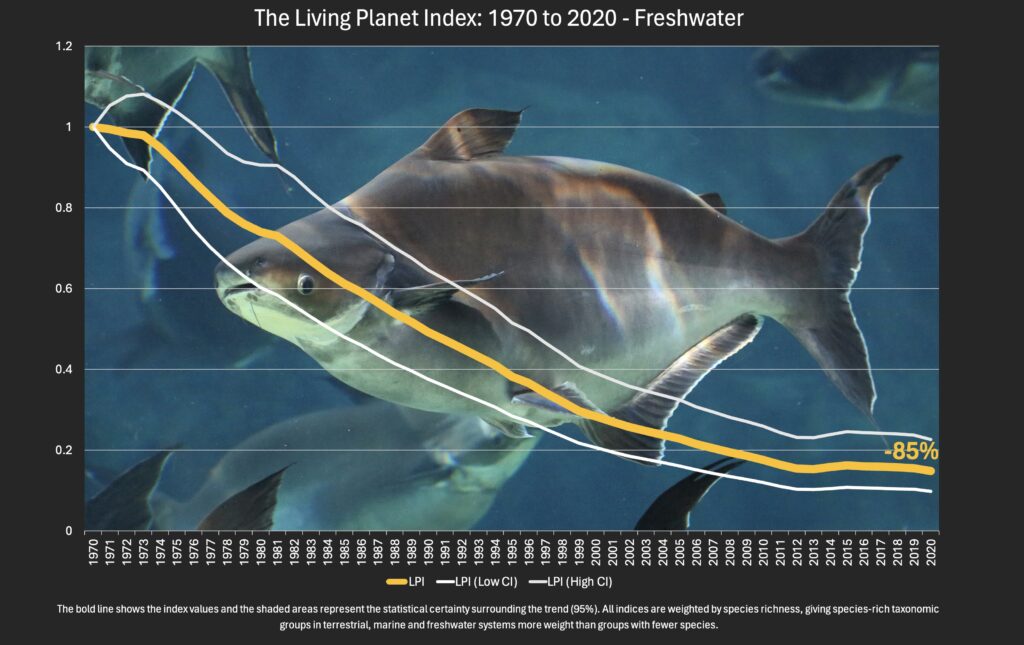Yesterday the latest Living Planet Index (LPI) report was released by WWF and Zoological Society of London (ZSL). It paints a sobering picture: wildlife populations have plummeted by an average of 73% over the past half-century.
Based on nearly 35,000 monitored population trends spanning 5,495 species, LPI documents a collapse in biodiversity that extends across amphibians, birds, fish, mammals, and reptiles. The situation is especially grim for freshwater species, with populations plunging by 85%, while terrestrial and marine species have seen declines of 69% and 56%, respectively.
Geographically, Latin America and the Caribbean stand out for their 95% decrease in wildlife populations, followed by Africa (76%) and the Asia-Pacific region (60%). North America and Europe, while experiencing relatively smaller drops of 39% and 35%, respectively, are not exempt. The decline appears less pronounced here due to conservation efforts and species reintroductions following earlier large-scale habitat loss.

The primary drivers of this trend are familiar yet formidable:
⚠ habitat degradation,
⚠ overexploitation,
⚠ invasive species,
⚠ climate change, and
⚠ pollution.
The food system emerges as a chief culprit, implicated in habitat loss across all regions.
The LPI serves as an early warning signal, showing us that ecosystems are faltering. When species populations dip below critical levels, the services they provide—such as seed dispersal, pollination, and nutrient cycling—begin to falter, threatening the stability of ecosystems worldwide. Such declines also compromise ecosystem resilience, leaving nature—and by extension, human society—more vulnerable to disruptions from disease, extreme weather, and other stressors.
The report raises alarms over looming “tipping points,” thresholds where cumulative impacts could precipitate sudden and irreversible shifts. It points to the fragility of coral reefs, the Amazon rainforest, and the polar ice caps as potential flashpoints for drastic change. Regional examples, like the decline of pine forests in North America or repeated coral bleaching on the Great Barrier Reef, illustrate how ecological boundaries are already being tested.
While these findings underscore the formidable scale of the challenge, they also hint at the possibility of averting catastrophe. The time to bolster ecosystem resilience and curb biodiversity loss is now—before the tipping points tip.
As the report suggests, the march toward planetary degradation is not yet a fait accompli; it’s more a matter of the clock ticking ominously in the background.
LPI report

